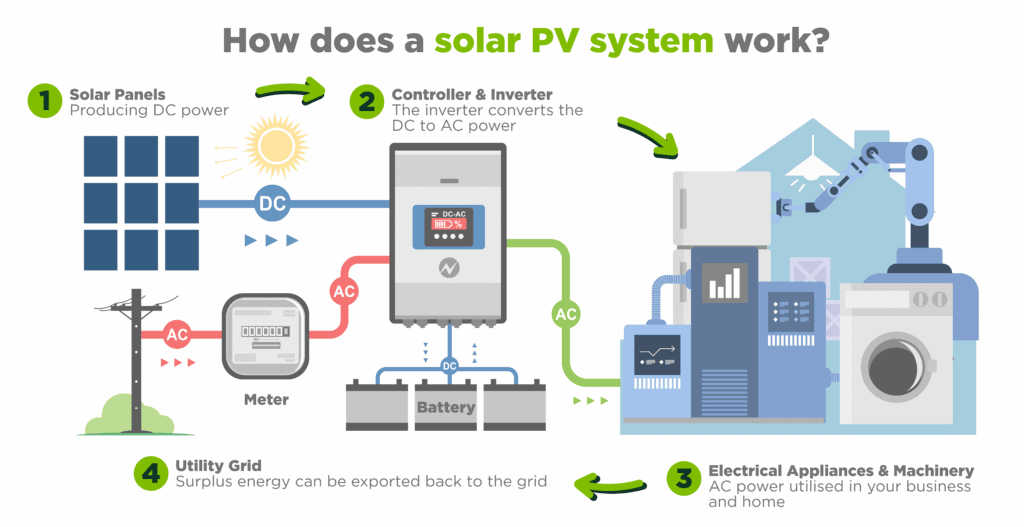We produce a lot of content about solar panels, but how do they actually work? In the first of our “Beginner’s Guide” series we are looking at the science behind solar energy. From the moment sunlight hits a panel to the point where it powers your kettle, we’ll break down exactly how the sun’s rays are transformed into usable electricity. Whether you’re curious about how solar fits into everyday life or just want to understand the basics, this guide will show you how solar power goes from sunlight to a steaming cup of tea—no jargon, just clear and simple explanations.
What are solar panels?
Solar panels are devices that convert sunlight into electricity. They’re made up of solar cells that generate electric current when exposed to light. Solar panels are one of the most popular renewable energy technologies for reducing utility costs and improving sustainability.
How do solar panels generate electricity?
Here’s a basic breakdown of the process from sunlight to usable electricity:
Step 1: Sunlight hits the panels
Solar panels contain photovoltaic (PV) cells, and when sunlight (which contain photons) hits the cells, it excites the electron within the silicon material, creating an electrical charge. This process generates direct current (DC) electricity, and travels through the electrical wires.
Did you know? Despite the reputation for cloudy weather across the UK, solar panels still generate electricity efficiently.
Step 2: The Inverter converts DC to AC power
Appliances don’t use alternate current (AC) electricity- they instead run on direct current (DC) electricity. This is where the inverter comes in. The DC electricity travels through the inverter and is converted to AC power, ready to use. The AC is then fed through a meter and into your home or business’ consumer unit.
Did you know? Most panels have warranties of 25 years, and many continue producing electricity well beyond that with minor efficiency loss.
Step 3: Powering your home and business
Then it’s time to switch it on! Once your solar system is installed and activated, it will immediately begin generating clean, renewable electricity for your property. From that moment, your home or business starts drawing power directly from the sun—lowering your energy bills and shrinking your carbon footprint. It’s a seamless transition to sustainable living, and the benefits begin from day one.
Did you know? Solar panels can cut energy bills by 70%.
Step 4: What happens to excess energy?
If your solar panels produce more electricity than you need at the time, the excess energy doesn’t have to go to waste. If you have a solar battery installed, the power is stored for later use, such as during the evening. This helps you to become less dependent on the grid. If you don’t have a battery, excess electricity can be exported back to the national grid, where it can be used by others. Through the Smart Export Guarantee – you can even get paid for your exported electricity.
If you’re interested in finding out how much you could save with solar panels, contact our team today!



